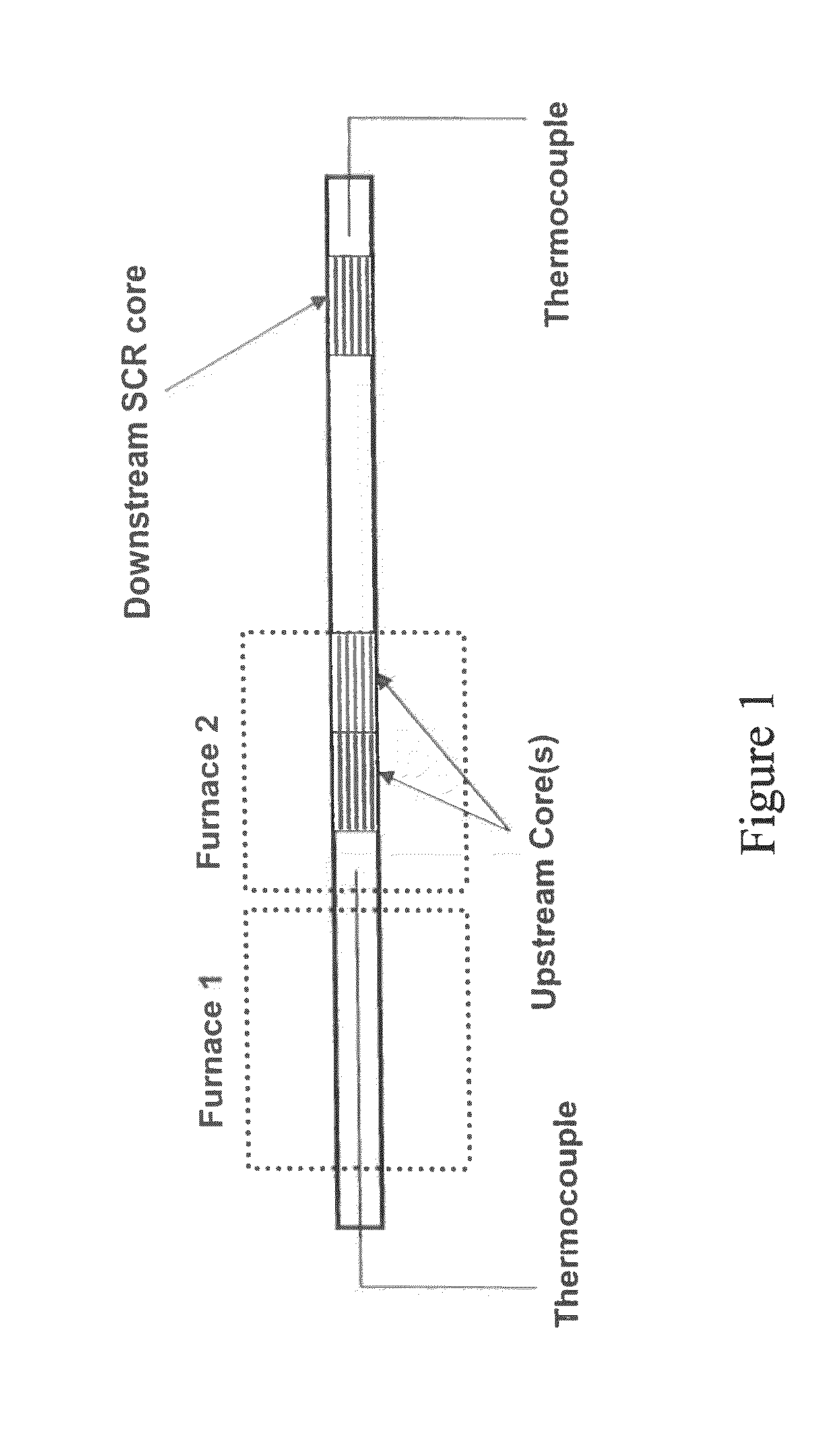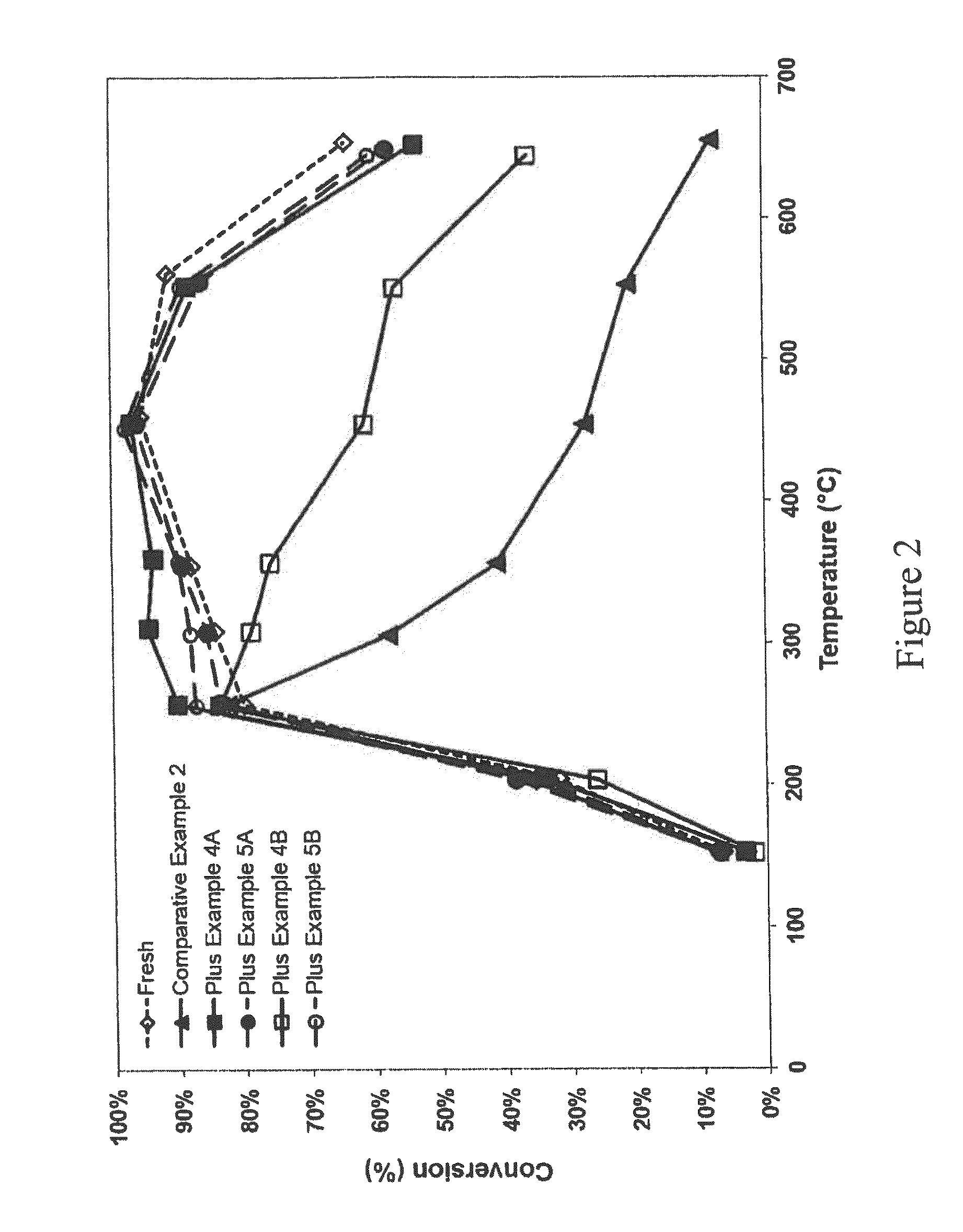Exhaust system for a lean-burn IC engine comprising a PGM component and a SCR catalyst
- Summary
- Abstract
- Description
- Claims
- Application Information
AI Technical Summary
Benefits of technology
Problems solved by technology
Method used
Image
Examples
example 1
Preparation of Substrate Monolith Coated with 5 wt % Fe / Beta Zeolite
[0082]Commercially available Beta zeolite was added to an aqueous solution of Fe(NO3)3 with stiffing. After mixing, binders and rheology modifiers were added to form a washcoat composition.
[0083]A 400 cells per square inch cordierite flow-through substrate monolith was coated with an aqueous slurry of the 5 wt % Fe / Beta zeolite sample using the method disclosed in Applicant / Assignee's WO 99 / 47260, i.e. comprising the steps of (a) locating a containment means on top of a support, (b) dosing a pre-determined quantity of a liquid component into said containment means, either in the order (a) then (b) or (b) then (a), and (c) by applying pressure or vacuum, drawing said liquid component into at least a portion of the support, and retaining substantially all of said quantity within the support. This coated product (coated from one end only) is dried and then calcined and this process is repeated from the other end so tha...
example 3a and 3b
Preparation of Alumina Guard Beds
[0086]A 400 cells per square inch cordierite flow-through substrate monolith was coated with an aqueous slurry comprising particulate alumina using the method disclosed in Applicant / Assignee's WO 99 / 47260. The solids content was selected to prepare two different washcoat loadings: a first (designated Example 3A) of 1.0 g / in3; and a second (3B) of 0.4 g / in3. The resulting parts were dried, then calcined.
[0087]A core of 1 inch (2.54 cm) diameter×3 inches (7.62 cm) long was cut from the finished article.
example 4a and 4b
Preparation of Ceria:Zirconia Mixed Oxide Guard Beds
[0088]A 400 cells per square inch cordierite flow-through substrate monolith was coated with an aqueous slurry comprising a particulate ceria:zirconia mixed oxide using the method disclosed in Applicant / Assignee's WO 99 / 47260. Two different ceria:zirconia mixed oxide materials were used. A first (designated Example 4A) had a ceria:zirconia weight ratio of 9:1; whereas a second (4B) had ceria:zirconia weight ratio of 1:9. Both ceria:zirconia mixed oxides were coated on the flow-through substrate monolith at a washcoat loading of 1.0 g / in3. The resulting parts were dried, then calcined.
[0089]A core of 1 inch (2.54 cm) diameter×3 inches (7.62 cm) long was cut from the finished article.
PUM
| Property | Measurement | Unit |
|---|---|---|
| Time | aaaaa | aaaaa |
| Temperature | aaaaa | aaaaa |
| Weight ratio | aaaaa | aaaaa |
Abstract
Description
Claims
Application Information
 Login to View More
Login to View More - R&D
- Intellectual Property
- Life Sciences
- Materials
- Tech Scout
- Unparalleled Data Quality
- Higher Quality Content
- 60% Fewer Hallucinations
Browse by: Latest US Patents, China's latest patents, Technical Efficacy Thesaurus, Application Domain, Technology Topic, Popular Technical Reports.
© 2025 PatSnap. All rights reserved.Legal|Privacy policy|Modern Slavery Act Transparency Statement|Sitemap|About US| Contact US: help@patsnap.com



